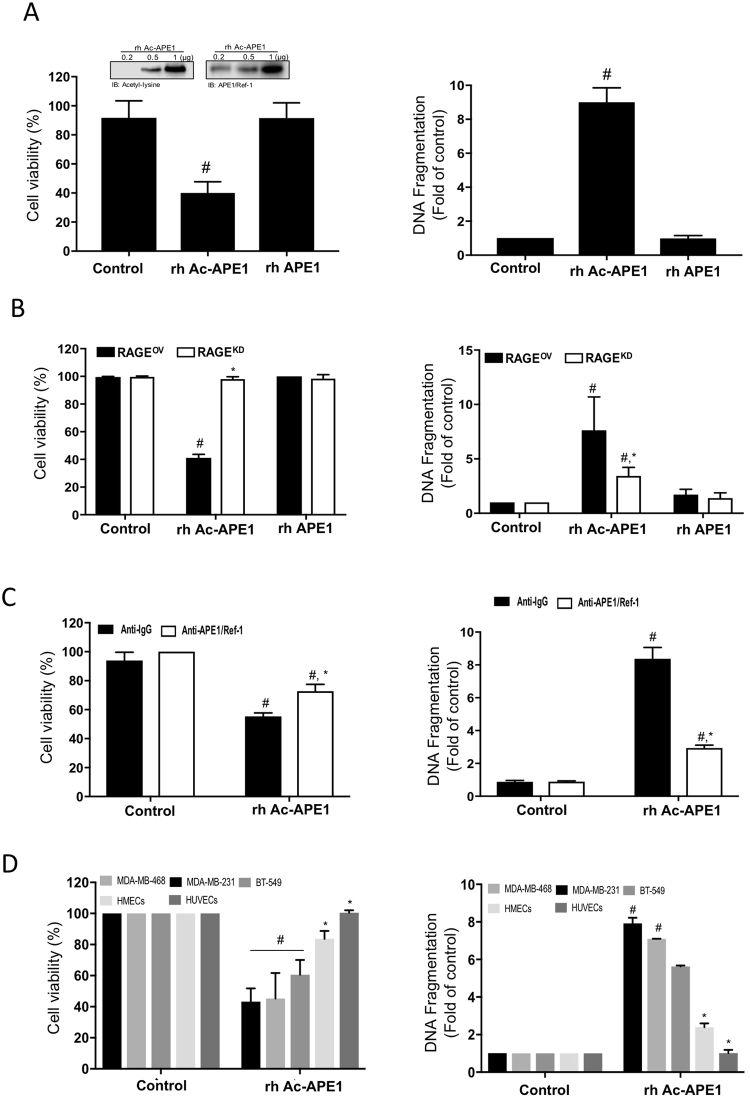Figure 8.
Recombinant Ac-APE1/Ref-1 induced apoptotic cell death by binding to RAGE in TNBCs, leading to a decrease in cell viability, but not in normal cells. (A and C) Wild-type MDA-MB-231, (B) RAGEOV, or RAGEKD MDA-MB-231 cells (D) MDA-MB-231, MDA-MB-468, BT-549 cells, HMECs, and HUVECs were treated with 5 mM ASA in the presence of 0.1 μM TSA. After incubation for 6 h, the medium was replaced with fresh medium. Cells were further treated with rh Ac-APE1/Ref-1 (1 µg) or rh APE1/Ref-1 (1 µg) for 24 h. The inset shows acetylated- or native form of APE1/Ref-1. Cell viability and cytoplasmic histone-associated DNA fragmentation were determined. (C) Blocking effect of the anti-APE1/Ref-1 antibody on the binding interaction between RAGE and Ac-APE1/Ref-1. Cells where the medium was replaced with fresh medium were pretreated with rabbit-IgG (2 µg) or anti-APE1/Ref-1 (2 µg) for 2 h and then further incubated with rh Ac-APE1/Ref-1. (B) to (C), columns, mean (n = 3); bars, SE. *P < 0.05 versus between groups by one-way ANOVA followed by Bonferroni’s multiple comparison test. Columns, mean (n = 3); bars, SE. *P < 0.05 versus within-group by one-way ANOVA followed by Bonferroni’s multiple comparison test. In (A) to (D), columns, mean (n = 3); bars, SE. #P < 0.01 versus control cells was determined by one-way ANOVA followed by Bonferroni’s test.

